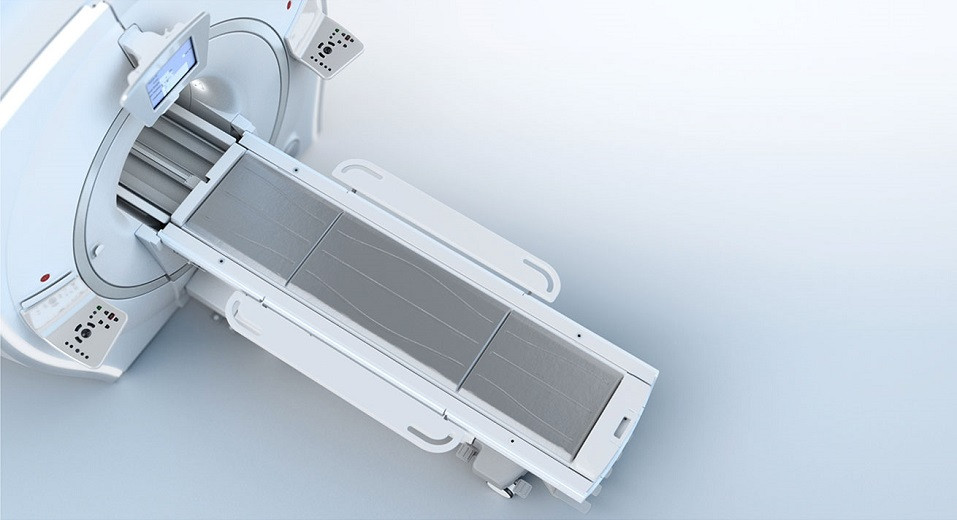Helium Is Kryptonite For iPhones and Apple Watches
A hospital technician discovers that the inert gas Helium can temporarily brick iPhones and Apple Watches, but doesn’t affect Android devices.
One word of advice, Apple users: Beware of floating balloons. A system specialist found out that Helium can brick both iPhones and Apple Watches during the installation of an MRI machine.
Android phones, however, didn’t suffer the issue.

Erik Wooldrige — a Systems Specialist at Morris Hospital, in Morris, Illinois — got an onslaught of alarmed calls during the installation of a new General Electric Magnetic Resonance Imaging machine, a body scanning device that uses strong magnetic fields and radio waves to record three-dimensional images of patients' guts.
MORE: The One iPhone Trick Everyone Needs to Know
According to his own account, his “immediate thought wa that the MRI must have emitted some sort of EMP [electromagnetic pulse], in which case we could be in a lot trouble.” However, after receiving calls regarding 40 different Apple devices, he noticed that nothing else was affected — including Android phones. Needless to say, he was extremely puzzled.
When Erik went to check out the devices, he was even more puzzled with their erratic behavior: “Most of them were completely dead. I plugged them in to the wall and had no indication that the device was charging. The other [Apple] devices that were powering on seemed to have issues with the cellular radio.” The Wi-Fi connection, however, was normal and fast.

In a now deleted thread on Reddit, other people chimed in with the possibility of helium being the culprit— the superconducting magnets inside MRI machines require liquid helium to work. When Erik went to check out this possibility, he found out that there had been a helium leak — and it vented into the building. Approximately 120 liters of liquid helium vented over five hours while the new magnet was cooled down to become operational.
Sign up to get the BEST of Tom's Guide direct to your inbox.
Get instant access to breaking news, the hottest reviews, great deals and helpful tips.
According to Erik, since “[t]he MRI room is not on an isolated HVAC loop, it shares air with most or all of the facility. We do not know how much of the 120 liters ended up going outdoors and how much ended inside.”
Since helium expands at atmospheric pressure, that was a total of 90,000 liters of gaseous helium.
MORE: Fastest Wireless Network - We Tested 8 Carriers to Crown a Winner
Erik also reported that, after they closed the leakage, the Apple devices started to recover, but not all of them. He claims that some Apple Watches were working but the touch screens stopped functioning and didn’t recover until several days later. One of the affected iPhone had “severe service issues after the incident.” The models affected, he discovered, were iPhone 6 models and higher, and all the Apple Watch models. The only iPhone 5 in the building was not affected. Neither were the Android phones.
One of the theories according to iFixIt, was that the iPhones are using a new timing oscillator, the clock that makes the phones and every computer work. This oscillator — called the SiT512 — is the world’s smallest and helium may be affecting it, causing these effects.
Erik did a experiment (since removed from YouTube), placing a working iPhone 8 Plus in a sealed bag and filling it with helium at a much higher concentration than the one released by the incident. Eight minutes later, the iPhone locked up. iFixIt did the same in their labs and the same happened.
The final answer was in Apple’s own iPhone user guide: “Exposing iPhone to environments having high concentrations of industrial chemicals, including near evaporating liquified gasses such as helium, may damage or impair iPhone functionality.” If exposed, Apple advises to immediately disconnect your phone from any power adapter and let it out “air for a week.”
The helium must fully dissipate front he device’s interior and, after an entire week, you can charge your phone and start using it again without trouble.
Helium is the the second most common element in the universe after Hydrogen but extremely rare on Earth. In other words, don’t plan on taking your iPhone XR to take photos of Jupiter on a rainy day. And stay away from birthdays, political parties, and don’t ever ever play with evil clowns.
Jesus Diaz founded the new Sploid for Gawker Media after seven years working at Gizmodo, where he helmed the lost-in-a-bar iPhone 4 story and wrote old angry man rants, among other things. He's a creative director, screenwriter, and producer at The Magic Sauce, and currently writes for Fast Company and Tom's Guide.

